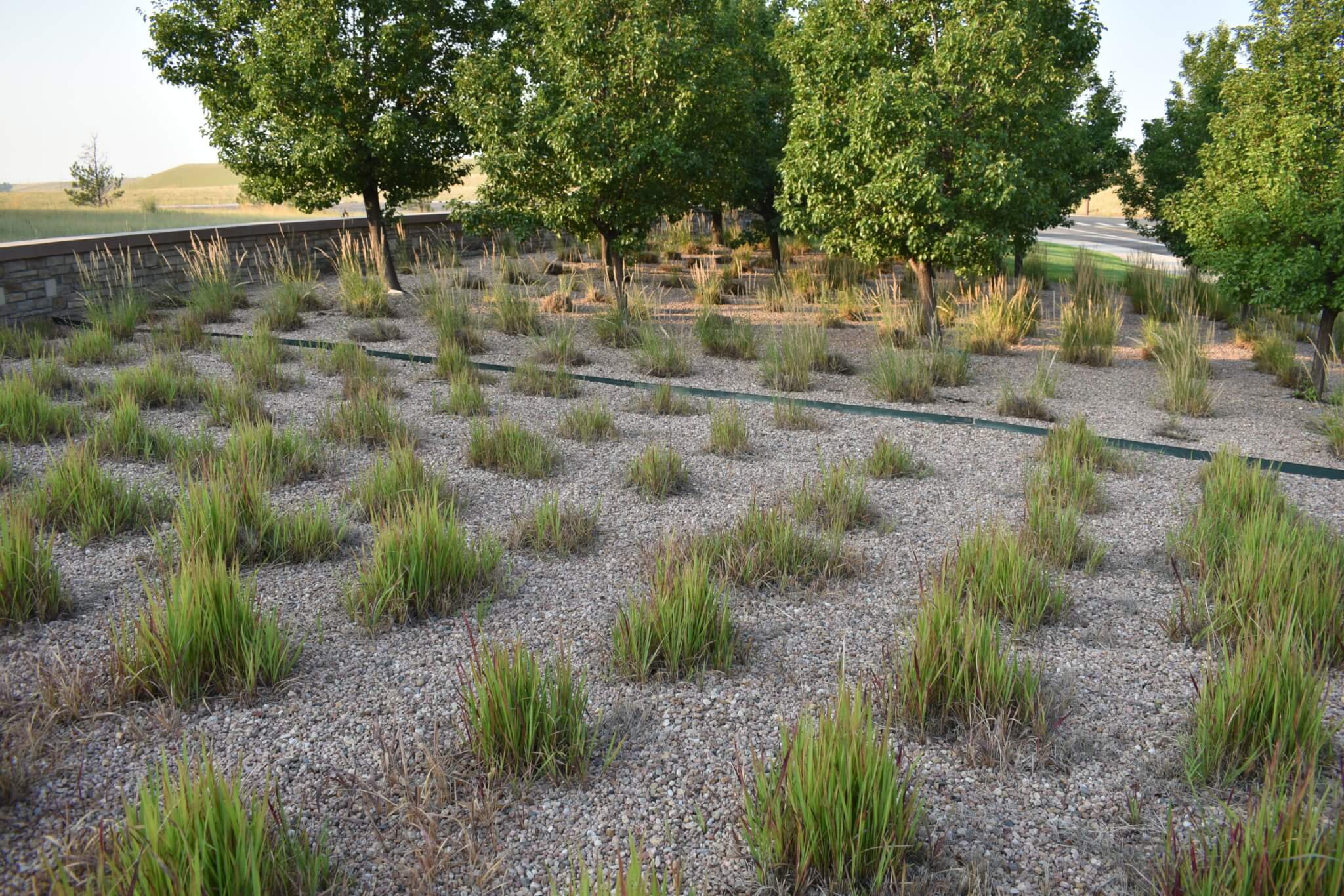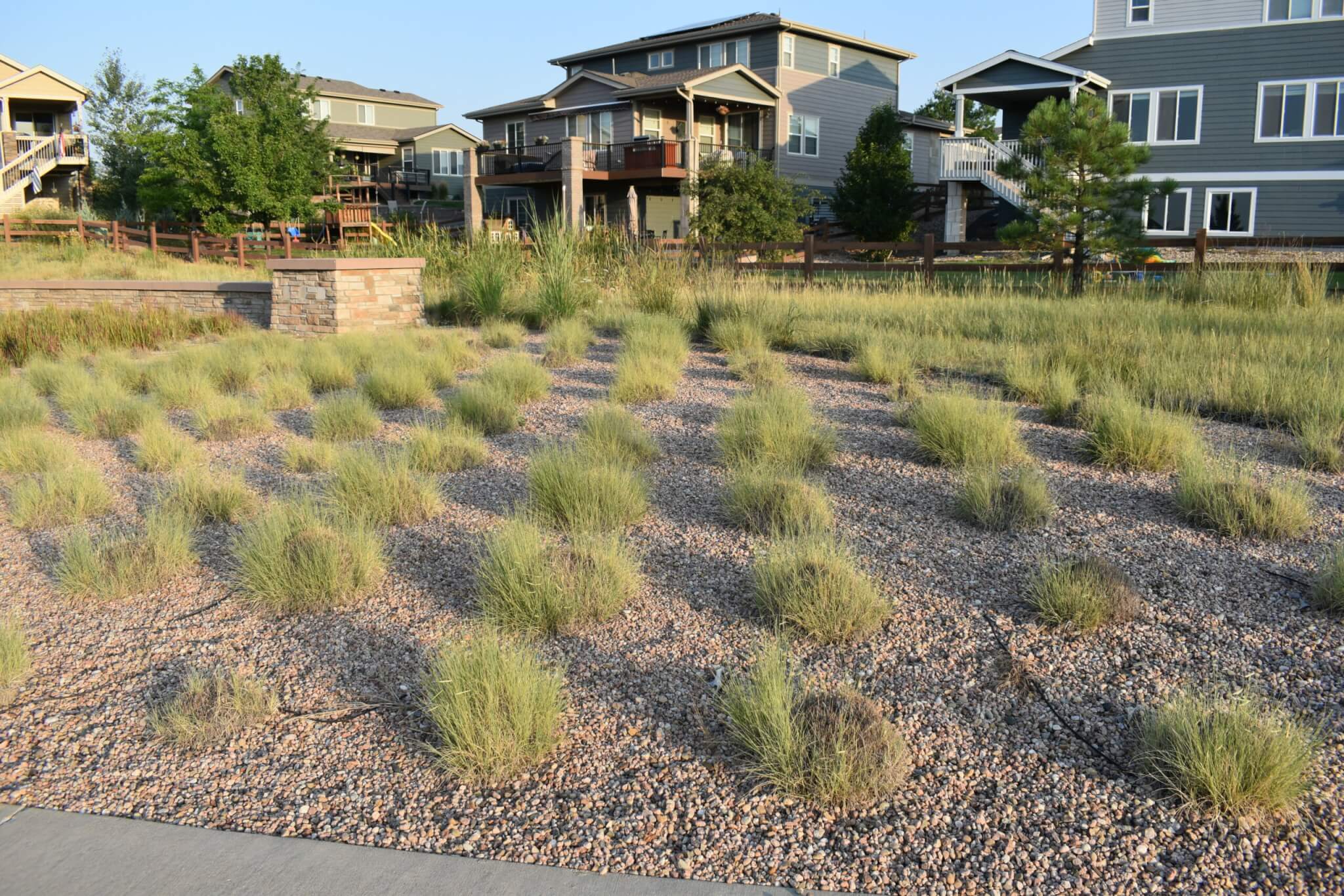
Firewise Landscaping: Designing for Safety in Colorado’s Wildland-Urban Interface
In Colorado’s beautiful but fire-prone wildland-urban interface (WUI), where homes meet natural landscapes, safety and aesthetics must go hand in hand. As wildfires become more frequent and intense, homeowners in foothill communities and forested neighborhoods are taking proactive steps to protect their properties—without sacrificing curb appeal.
Firewise landscaping is one of the most effective ways to reduce wildfire risk. By designing your landscape to resist ignition and slow the spread of flames, you not only help safeguard your home but also create a safer, more resilient neighborhood.
Here’s how to make your landscape more fire-adapted, using defensible space, fire-resistant plants, and smart spacing strategies.

What Is Defensible Space?
Defensible space is the buffer you create between your home and the surrounding vegetation. This space acts as a barrier to slow or stop the spread of wildfire and provides firefighters with a safe zone to defend your home if needed.
Colorado’s defensible space guidelines divide your landscape into three zones:
🔥 Zone 1: 0–5 feet from your home
This is the most critical area to keep clear.
- Remove all flammable materials like dead leaves, mulch, and dry grasses.
- Use non-combustible materials such as gravel, rock, or concrete.
- Choose low-growing, well-irrigated plants and avoid anything resinous or woody.
- Prune tree branches to stay clear of your roof and siding.
🔥 Zone 2: 5–30 feet
Create a “lean, clean, and green” zone to reduce fuel loads.
- Maintain lawns and groundcovers at a low height.
- Plant in widely spaced groups or islands with nonflammable gaps.
- Remove ladder fuels (vegetation that allows fire to climb from ground to treetops).
🔥 Zone 3: 30–100 feet
This outer zone slows fire and reduces intensity.
- Thin trees and shrubs to prevent crown fires.
- Remove dead trees, debris, and dense undergrowth.
- Maintain healthy native vegetation while reducing fuel continuity.
Choosing Fire-Resistant Plants
Fire-resistant plants don’t ignite as easily or burn as intensely. While no plant is completely fireproof, some are much safer than others.
Look for these characteristics:
- High moisture content in leaves and stems
- Low resin or oil content
- Open branching and sparse litter production
Recommended fire-resistant plants for Colorado:
- Groundcovers: Creeping thyme, ice plant, sedum
- Perennials: Coneflower, yarrow, columbine, penstemon
- Shrubs: Serviceberry, potentilla, spirea
- Trees: Aspen, bur oak, hackberry, certain maples
Avoid highly flammable plants like junipers, piñon pine, and ornamental grasses near structures.
Smart Spacing = Reduced Fire Spread
How you space and maintain your plants matters just as much as what you plant.
Spacing tips:
- Maintain vertical and horizontal separation between plants to prevent fire from “laddering” upward.
- Group plants in islands with firebreaks like gravel paths or flagstone patios in between.
- Keep shrubs and trees pruned and cleared of dead branches.
- Use hardscaping and rock mulch as attractive, fire-safe alternatives to wood mulch.

